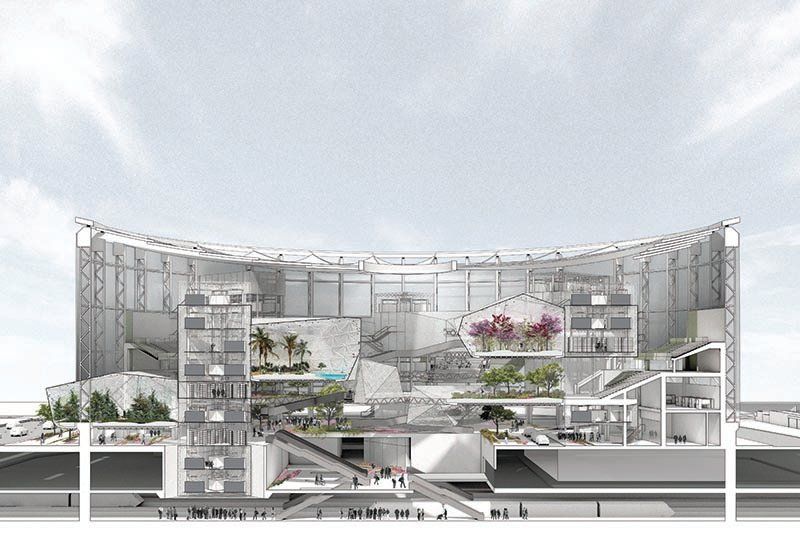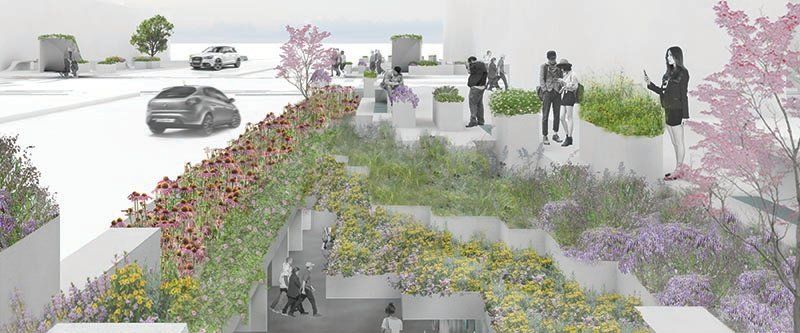Last-Minute NYC Holiday Gift Guide 🎁
We’ve created a holiday gift guide with presents for the intrepid New Yorker that should arrive just in time—



Madison Square Garden, reimagined as a cemetery and public space. All renderings by Mai Abusalih, Eric Giragosian, Min He.
There have been a lot of proposals for a future Penn Station and Madison Square Garden, ranging from the lofty (Vishaan Chakrabarti’s transparent glass atrium using the naked infrastructure of MSG), to the wild (a 1,200 foot free fall ride), to the practical but mundane (the current plans from Governor Cuomo). A student project from an architecture studio at Columbia University Graduate School of Architecture, Planning and Preservation manages to capture the practical, the wild and the lofty all in one by imaging Madison Square Garden converted into a futuristic cemetery and public space.

The studio is directed by architect Karla Rothstein of Latent Productions, who also directs Columbia University’s DeathLAB, a trans-disciplinary research and design initiative focused on re-conceiving how to live with death in the metropolis. The studio is also co-led by David Zhai, of the firm CO-OFFICE (formerly an architect with Bjarke Ingels Group) and Zhida Wu.

The project, entitled #RIP: Encoding Memory, is by Mai Abusalih, Eric Giragosian, Min He, who were students in the Advanced Architectural Design program over the summer of 2017 for practitioners who already have a masters or bachelors of architecture. A central jumping off point for the project involved the current squeeze for cemetery space in New York City and the history of repurposing burial grounds into parks. The students write that “the current state leaves remembrance and memorialization uprooted from the island, disconnecting the sites where memories were originally created and celebrated. The project aims to “celebrate traces and reverberations, returning memorialization and the power of place to New York City. Our project bridges the disintegration between where memories were made and where they are translated after death.”

Data storage site for climate controlled gardens

Stations in the city’s existing subway system would be used to record and encode memories, “making rememberance a part of the every commute,” the students write. Tracking hashtags associated with death in New York City, the students identified a number of hotspot nodes, including Madison Square Garden and Penn Station, one of their central interventions. #RIP: Encoding Memory re-purposes Madison Square Garden as a blooming civic shrine. The bodies of the dead would be freeze dried and sifted into fertilizer soil using the process of promession, an ecological burial process. The fertilized soil would be used to create a lush interior garden designed with congregation spaces for both commuters and mourners, as well as green spaces above subway stations. Family members who store the memories can use an app to literally fertilize the gardens with their loved ones.

Memory walls in the subway system

Gardens above the subway stations
The atrium would also contain data servers that store the digital memories collected in the subway system. The students remind us that one casket is the size of a computer server that can store 39 million memorials. The data servers perform an additional function in the space – they heat up and cool various climate gardens to create controlled weather conditions to grow plants from all climates.

Gathering areas for commuters and mourners
Architecture school is precisely the place to dream up wild plans but this studio roots the projects in the real world as well – the proposal might be out of the box but the processes involved to achieve #RIP: Encoding Memory are already technologically possible.
What do you think of this idea? Also, join us on our next tour of the Remnants of Penn Station, which was one of the research methods for the students:
Tour of the Remnants of Penn Station
Next, check out the Top 10 Secrets of Penn Station.
Subscribe to our newsletter